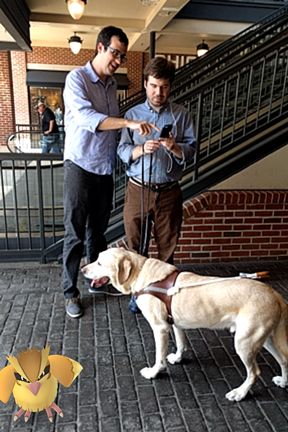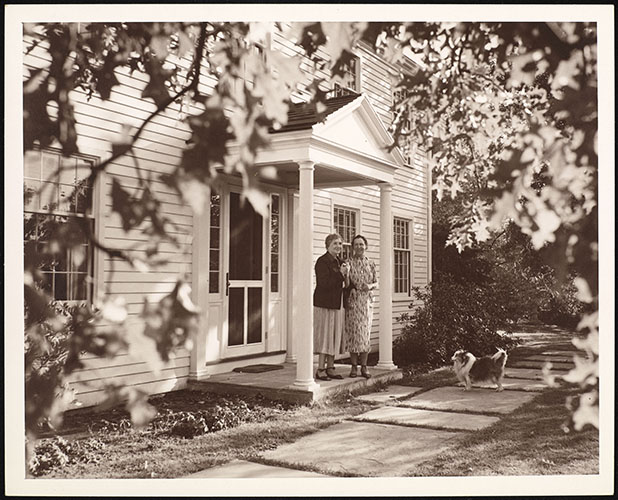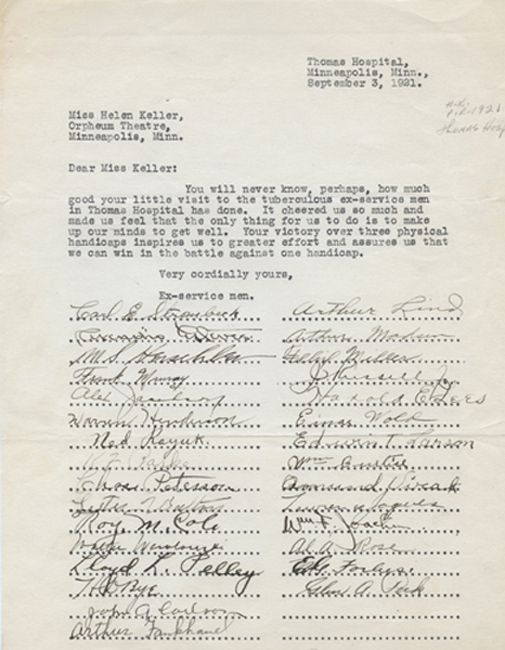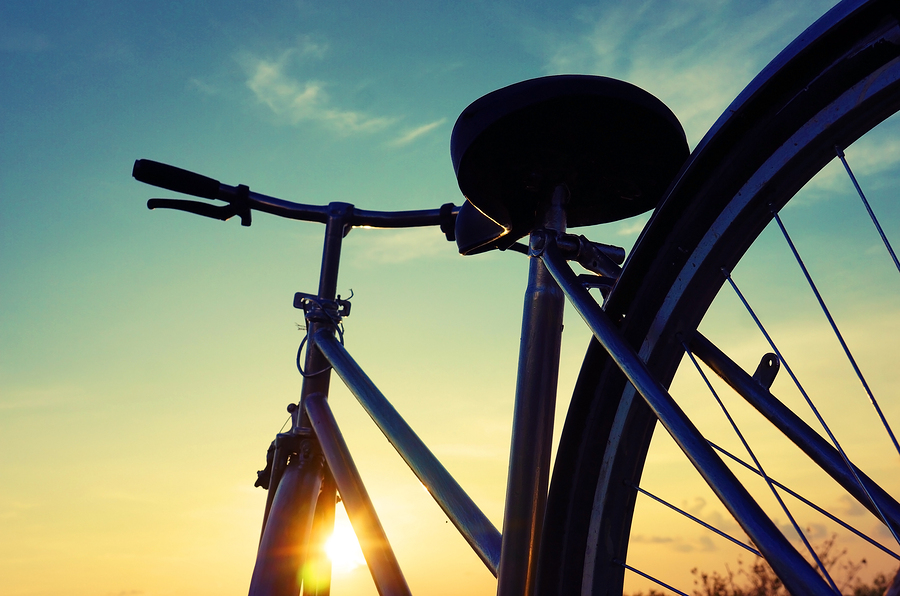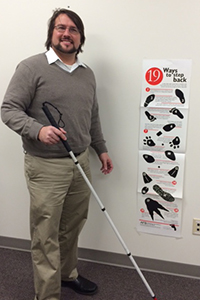Transportation is a key public policy and research priority for the American Foundation for the Blind. AFB advocates for significant investments in reliable, high-quality, accessible transportation options for people who are blind or have low vision.
In light of the recent 7.8-magnitude earthquake that struck New Zealand's South Island on Monday, November 14th, and the 6.9-magnitude earthquake that struck Japan's Honshu Island on Tuesday, November 22nd, the American Foundation for the Blind (AFB) extends its heartfelt sympathy to all those affected by the initial tremor and aftershocks.
Image: Left to right, William Reuschel stands with Aaron Preece, looking at an iPhone, while Aaron's guide dog, Joel, appears to look for a Pidgey.
Image: Left to right, Helen Keller standing with Polly Thomson at the door to their home in Easton, Connecticut, circa 1955.
Editor's note: We weren't too surprised to read the following question in the most recent installment of "Dear Prudence" on Slate:

I heard such exciting news this morning! A well-known drone company, Auto-Fly, and a major bicycle manufacturer, Trekker, have teamed up to make a self-driving bicycle.
The new device has pedals and seat much like a conventional bike, but the steering and braking are handled by electronic and mechanical devices based on recreational drone technology.
As an orientation and mobility specialist, I’ve worked with visually impaired individuals of all ages and backgrounds, many of whom speak Spanish as their primary language. Let’s face it, if your Spanish is as limited as mine is, you need an interpreter, but sometimes there are none to be found.
Here are some short-term strategies I’ve used when my back was to the wall:
A friend of mine sent me a link to an episode of NPR's "This American Life" on Dan Kish. I had not heard it yet, though I do listen to that show often. I listened to the piece right away, and I thought I would share my take on the piece.

